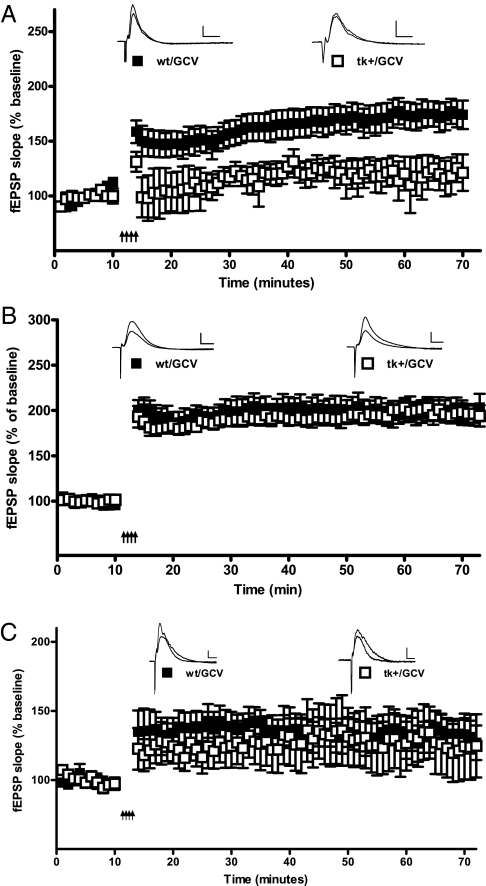Fig. 1.
Suppression of neurogenesis disrupts LTP in the dentate gyrus of young adult mice. (A) After 10 min of baseline recording, a tetanus of four bouts of 100-Hz stimulation (500 ms) separated by 30 s was delivered (arrows). Following the tetanus, the average fEPSP slope (as a percentage of baseline) was significantly enhanced in slices from wild-type mice treated for 28 d with GCV (wt/GCV). In contrast, slices from nestin-tk mice treated with GCV (tk+/GCV) exhibited no significant increase in fEPSP slope after the tetanus. (B) LTP in response to a high-frequency tetanus was examined in the presence of artificial cerebrospinal fluid that contained 50 μM picrotoxin. Slices from wild-type mice (wt/GCV) and nestin-tk mice (tk+/GCV) treated with 28 d of GCV both exhibited robust and comparable LTP. All data are mean ± SEM. (C) LTP is restored 42 d after termination of GCV treatment. Wild-type mice and nestin-tk mice were treated with 28 d of GCV (wt/GCV and tk+/GCV, respectively), and hippocampal slices prepared 42 d later. Slices from both groups exhibited robust LTP following the high-frequency tetanus. All data are mean ± SEM. Insets present representative extracellular fEPSP recordings made before (average of first 10 min) and after (average of last 10 min) the tetanus. (Scale bars, 0.25 mV/5 ms.)

